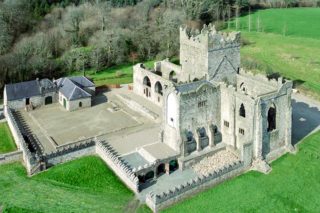Jerpoint Cistercian Abbey
Where Irish medieval sculpture reached new heights
13 March - 03 December 2025
Admission
Adult: €5.00
Group/Senior: €4.00
Child/Student: €3.00
Family: €13.00
Jerpoint Cistercian Abbey
Founded in the 12th century, Jerpoint Abbey is one of the best examples of a medieval Cistercian Abbey in Ireland. The architectural styles within the church, constructed in the late twelfth century, reflect the transition from Romanesque to Gothic architecture. The tower and cloister date to the fifteenth century.
Jerpoint is renowned for its detailed stone sculptures found throughout the monastery. Dating from the thirteenth to the sixteenth centuries these include mensa tombs from the O’Tunney school, an exquisite incised depiction of two 13th century knights, the decorated cloister arcades along with other effigies and memorials.
Children can explore the abbey with a treasure hunt available in the nearby visitor centre. Search the abbey to discover saints, patrons, knights, exotic animals and mythological creatures.
A small but informative visitor centre houses an excellent exhibition.
Highlights

Gallery
Opening Times
March 9.30 – 17.00
April – September 9.30 – 17.30
October 10.00 – 17.00
November 10.00 – 16.30
last admissions 45 minutes before closing
Please note that barbecues are strictly forbidden at this site
Seasonal Opening Times
Getting Here
2.5km south west from Thomastown on the R448, Exit 10 on M9, follow signs for Thomastown.
Click the relevant icon below to open Maps directions
Facilities
- Art
- Bicycle Parking
- Brochure
- Car park
- Card Accepted
- Exhibition
- Guided tours
- Interpretive exhibit
- Picnic Area
- Toilets
- Wheelchair Accessible
- Wheelchair Accessible Toilet
Restrictions
- Assistance dogs only
- No climbing
Nearby sites to visit
Jerpoint Cistercian Abbey
Kells Priory
Visit Ireland’s largest enclosed ecclesiastical site
Approx. 7.9 km from Jerpoint Cistercian Abbey
St. Mary’s Church Gowran
Records written in stone in the heart of Gowran
Approx. 14.5 km from Jerpoint Cistercian Abbey
Kilkenny Castle
The jewel in the crown of an enchanting medieval city
Approx. 16.7 km from Jerpoint Cistercian Abbey









